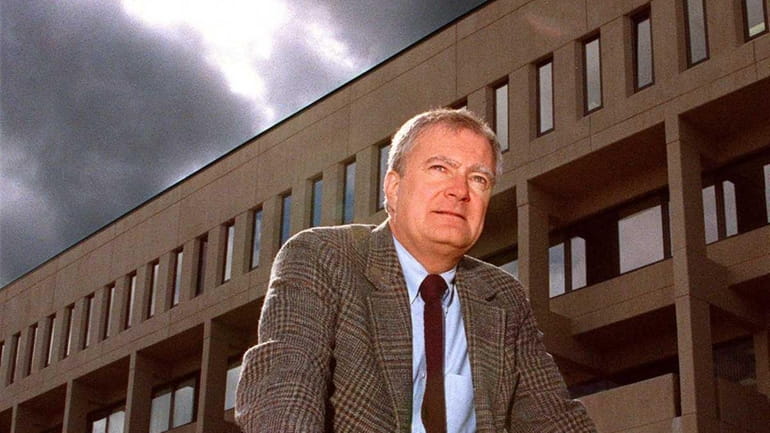Crease: Marburger knew how to do science

Former SUNY Stony Brook president John Marburger Credit:
Robert P. Crease is chairman of the philosophy department at Stony Brook University, and once co-taught a course on the social dimensions of science with John Marburger. He is completing a book about the history of Brookhaven National Laboratory.
John Marburger, a former president of Stony Brook University and one of the most
effective and farsighted scientific administrators of the postwar period, died on Thursday.
Marburger realized that science was undergoing profound changes, coming to be conducted in a theater whose imaginary fourth wall had fallen. In the past, scientists had been both the actors and judges of their own performances; during his career, they came to be exposed to the scrutiny and oversight of a greater audience. His conviction that this was the right way to do science in a democracy was sound -- it frustrated some, but inspired others.
Love for science shaped Marburger's life, from the time his mother read him the Childcraft volume on "Science and Industry" when he was 5. He graduated from Princeton and Stanford, and joined the physics department at the University of Southern California in 1966. He became its chairman in 1972, and dean in 1976.
These jobs forced him to address wider audiences. Facing a scandal involving preferential treatments for athletes, USC officials designated the articulate Marburger their spokesman. After he became president of Stony Brook in 1980, he dealt with yet fiercer controversies -- some dramatic and deep-rooted -- as when an African studies professor's equation of Zionism with racism provoked certain Jewish organizations to threaten to arrive armed on campus.
In 1983, Gov. Mario Cuomo asked Marburger to head a fact-finding commission on Shoreham's nuclear power plant. The commission included a broad range of Long Islanders who, he knew, would never agree. Still, he managed the meetings diplomatically, attempting in his final report to describe a bigger vision of what was happening in which even the most radical partisans could recognize themselves. This became his signature style in conflict resolution.
In 1988, Marburger chaired the organization overseeing construction of the Superconducting Super Collider in Texas. It was the first accelerator on which the government was imposing formal procurement and oversight procedures. The ugly experience of the project's premature death in 1993 made him aware of a still greater picture -- that the government, too, was part of the community that scientists served, with its own evolving requirements.
In 1997, a small leak of slightly radioactive water at Brookhaven National Laboratory led to a media and political uproar, leaving in its wake the firing of Brookhaven's contractor by the Department of Energy, the resignation of the lab's director and calls by activists to close the lab. Marburger, ultimately chosen as the new director, was charged with resolving the controversy.
Many scientists hoped for a white knight to do battle with activists seeking to close the lab. They got something better: someone who understood that Brookhaven served not only scientists and activists but businessmen, regulators, environmentalists, politicians, and consumers past and future of the lab's many discoveries.
In 2001, Marburger became science adviser to President George W. Bush, going to the White House as a scientist, not an advocate. He refused to weigh in on high-profile, politically controversial issues, but instead set about fixing broken connections in the unwieldy machinery by which the government approves and funds scientific projects.
Again, those looking for a white knight felt disappointed, and some bitterly criticized him for collaborating with the Bush administration. But he left the office running better than when he entered.
"How do you stand it?" a friend once asked, after a particularly distressing meeting with critics. Marburger pondered that question a few hours later in notes to himself. He thought of building his harpsichord, refurbishing his vintage car, and designing his Belle Terre home on a computer program -- all projects that juggled many complex elements in a way he found soothing. But his most compelling pursuit was science. "Physics has been the main stabilizer of my life," he concluded.
The week before he died, Marburger was still active. He arranged publication of a book explaining quantum mechanics, "Constructing Reality," which will appear next month. He worked on an ambitious proposal for Stony Brook and Brookhaven to partner in an energy hub. And he began writing a new book on his experiences as an administrator.
It's too bad he didn't have a chance to finish it; those now performing in the new science theater have much to learn from his example.
